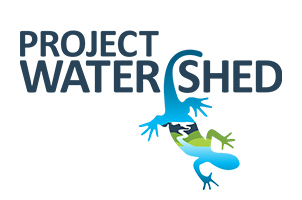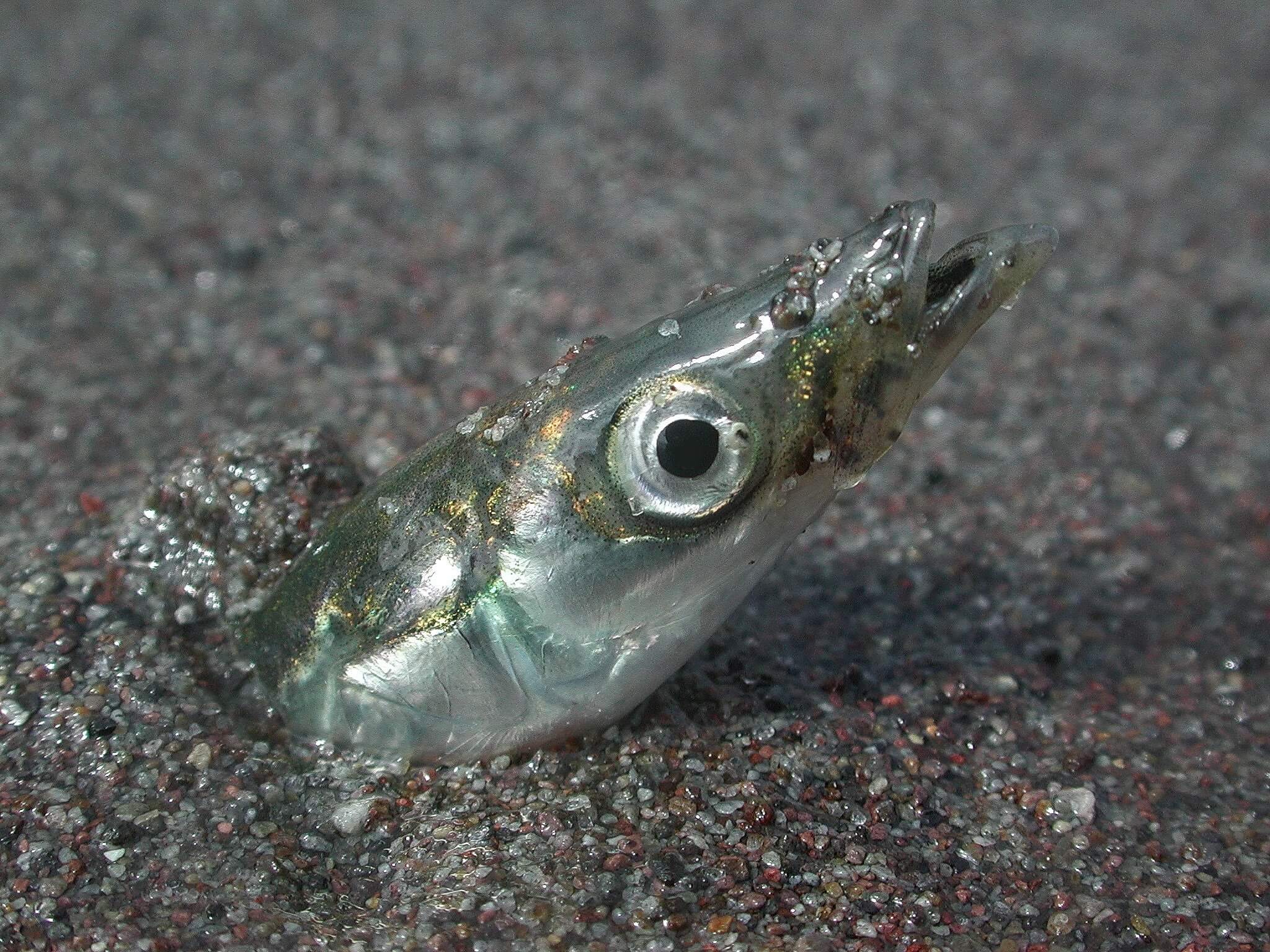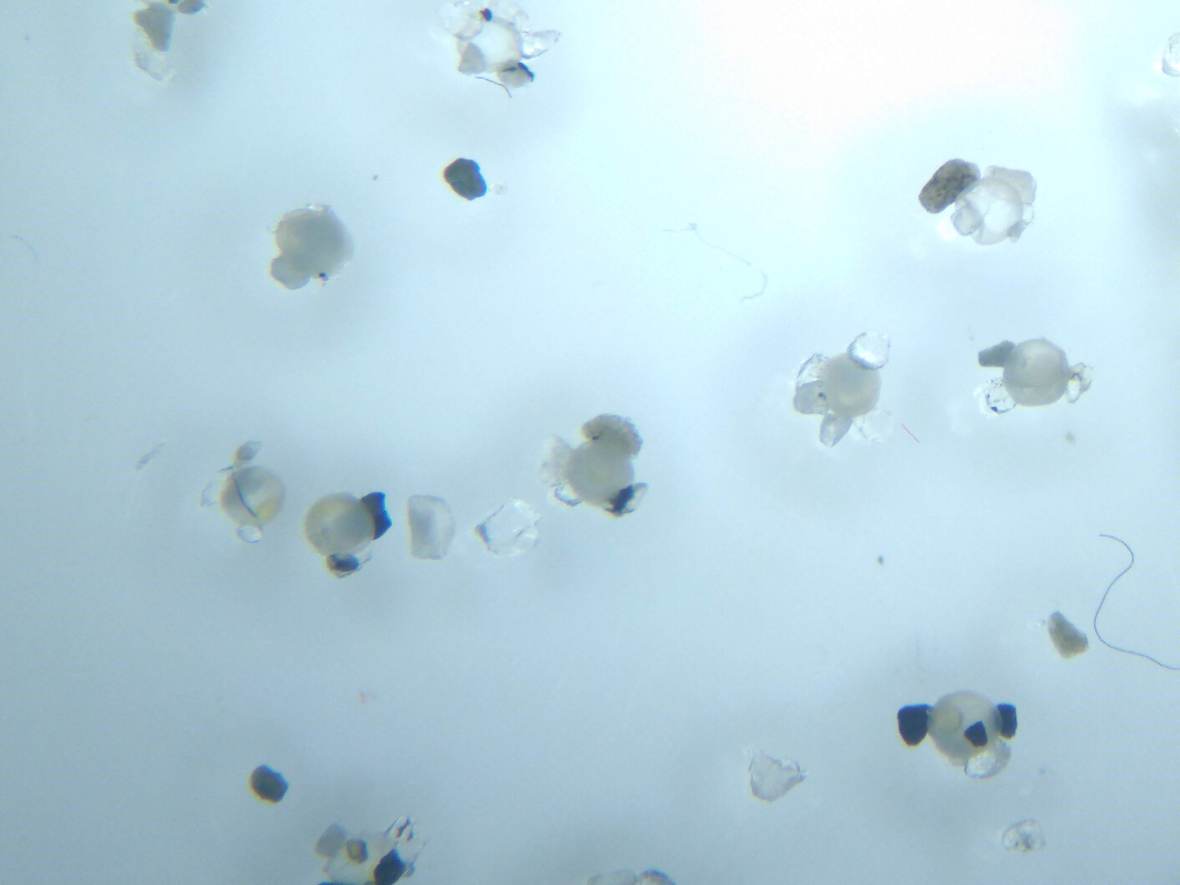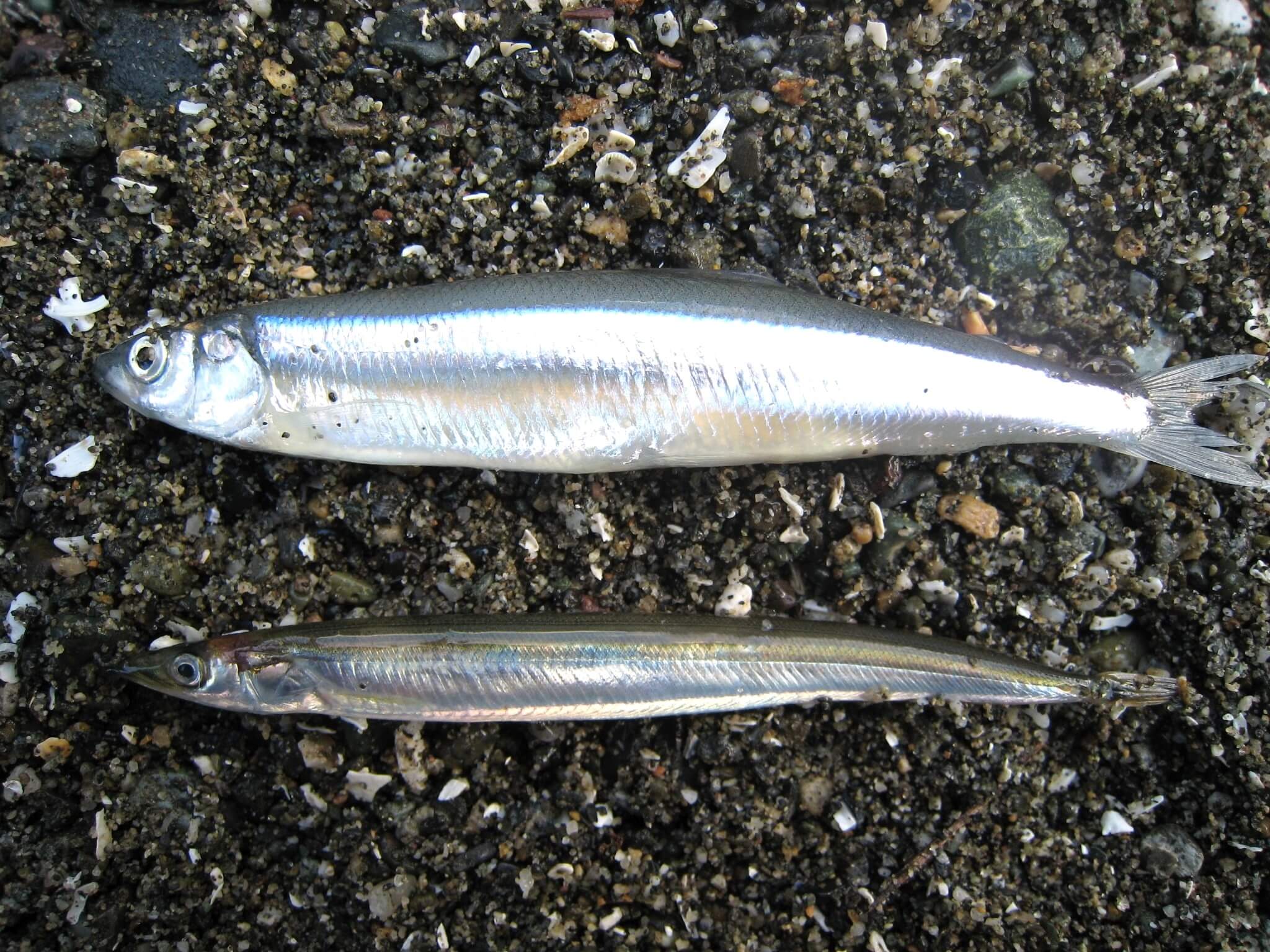Tis the Season for Forage Fish!
Pacific sand lance burrowing in the sand
Pacific sand lance eggs from Kye Bay by V. East
Top: Surf smelt, Bottom: Pacific sand lance by K. Perry
Beach survey in progress by A. Spooner
Project Watershed along with a group of citizen scientists, the K’omoks First Nation, and North Island College student volunteers have been working hard to identify these forage fish spawning beaches since September 2019. This work is linked to a larger initiative to identify forage fish beaches within the entire Salish Sea where forage fish play a critical ecological role as a main food source for marine birds, fish and mammals.
Last November/December, we confirmed that Goose Spit, Air Force Beach, Shingle Spit, Mansons Landing, and Smelt Bay are all positive sites for Pacific sand lance. In addition, Pacific sand lance eggs have recently been found at Kye Bay.
We can confirm a beach is positive for forage fish in a variety of ways:
- Visual scrutiny can reveal live or dead adults or juveniles on the beach.
- Using a microscope to look at sand samples can relieve the small eggs that are laid on the beach and stuck to sand grains.
- An environmental DNA (eDNA) analysis of sand samples can detect forage fish DNA revealing that the fish were on the beach.
South of the Comox Valley Pacific sand lance embryos have been found in Parksville at Community Park Beach and San Pariel; in the Qualicum area at Little Qualicum Beach and Sunnybeach, in Lantzville at Sebastian Beach, in Nanaimo at Piper’s Lagoon, on Gabriola Island at RuBay Beach and on Pender Island at James Point Beach. In November, surf smelt eggs were found around the Victoria area at Tryon Beach and Lillian Hoffar Park Beach in North Saanich, Surfside Beach and Robert’s Bay Beach in Sidney and Cadboro Bay Beach in Saanich/Oak Bay.
We are seeing all this activity as November through to February is prime spawning time for Pacific sand lance, and while many Surf smelt have a broader spawning time frame (some spawn year round), they are also known to spawn in this winter window.
Identifying spawning beaches is a first step towards learning how to better protect and steward these important species. To find out more visit our Forage Fish page or read and download our forage fish brochure.
It must be mentioned that this work could not be completed without our amazing volunteers who have put in too many hours to count in the field, sieving, vortexing, and counting eggs. This research project is also made possible thanks to funding from the BC Salmon Restoration and Innovation Fund and the Pacific Salmon Foundation.
Related Posts
Mallard Creek Restoration Update for 2024
Restoration work in Mallard Creek will continue this year, including invasive removal, restoring connectivity, and trial planting of a new riparian species. Volunteer events starting in September 2024.
Volunteer at Kus-kus-sum Chamber of Commerce Event
We are showing Kus-kus-sum off to businesses in the Valley through a Chamber Business to Business event. We are looking for a few volunteers to assist with this event.
Coastal Plant Monitoring
Get involved with our new vegetation community science monitoring program!
Spring Field Trips
Throughout May and June Project Watershed will be taking elementary school classes out on field trips to learn about estuary and coastal ecology and to assist with planting and plant maintenance.
Working Together to Identify Forage Fish Spawning Beaches
This year marks the 5th year of a partnership between Comox Valley Project Watershed Society and North Island College on a long-term study to examine intertidal spawning habitats of forage fish in the northern Salish Sea.
Glen Urquhart Update – Spring 2024
Latest news from Glen Urquhart restoration progress for spring 2024.





